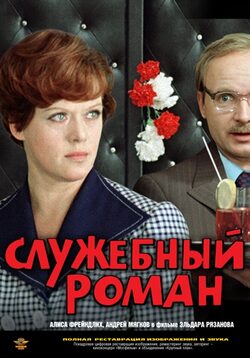and Balkan Europe
by IECOB & AIS Università di Bologna

This area offers a wide range of continuously updated news regarding both academic and cultural events together with academic calls and study programs
Call for Papers for a special issue of Studies in Eastern European Cinema on the topic “Artists, Amateurs, Alternative Spaces: Experimental Cinema in Eastern Europe, 1960–1990” (Spring 2016)
Deadline for submitting abstracts: July 15, 2014
Deadline for submitting full papers: January 15, 2015

Description
Today, there exists a substantial and growing body of literature on the history and significance of the feature films, both fiction and, to a lesser extent, documentary, that were produced in former Eastern Europe in the socialist era. Seen largely through the lens of national film schools, the cinematic “waves” that emerged forcefully in the 1950s, 1960s and beyond (such as the Polish School, Czech New Wave, and Yugoslav Black Wave) have received considerable attention, as have the oeuvres of many individual auteurs.
What has received much less consideration is the history of the various forms of experimental and alternative cinema that also existed and at times even thrived throughout the region prior to 1989. Often seen in art historical rather than film studies contexts, films made by amateurs (such as those participated in the extensive networks of amateur film club OHO group in Slovenia; Ion Grigorescu and Geta Bratescu in Romania; Tibor Hajas, Tamás St. Auby, and Dora Maurer in Hungary; and the KwieKulik Group in Poland, among many others) are rarely discussed as part of larger national or international film cultures in the region. Similarly, films by professionals who found ways to make highly experimental work at state-funded studios (such as the Béla Balázs Studio in Hungary, Neoplanta Studio in Serbia, or the Riga Film Studio in the former USSR) and film schools (such as the Łódź Film School and its Workshop of the Film Form) await further consideration, especially in a transnational context.
In the spring of 2014, the Department of Film Programs at the National Gallery of Art is hosting a series of screenings titled “Artists, Amateurs, Alternative Spaces: Experimental Cinema in Eastern Europe, 1960–1990,” which through a combination of thematic and country-specific programs aims to begin mapping the full of range of experimental filmmaking in the region, from the work of such acknowledged masters as Dušan Makavejev to films that have rarely been screened in public fora, such as the work of the Serbian amateur Ljubomir Šimunić.
As an academic counterpart of this project, the special issue of Studies in Eastern European Cinema seeks scholarly contributions that expand our knowledge of experimental film production in the former Eastern Bloc, which we define broadly to include all of the Warsaw Pact countries (including the former USSR), as well as former Yugoslavia. The films to which we seek to give greater visibility are those that straddle the worlds of professional and amateur filmmaking and those that transgress classificatory boundaries, being neither purely fictional narratives nor traditional documentaries. Of particular interest are studies that shed light on films and filmmakers who conducted formal artistic explorations of the medium, often while also pursuing other aesthetic or political goals. What is the significance of such films within the larger cultural landscape of post-war, socialist Eastern Europe? And how does a history of the region’s cinema that incorporates artists, amateurs, and the creative output of ‘alternative spaces’ look differently from the one we know today?
Eligible topics
Suggested topics to be explored in this special issue may include, but are not be limited to:
- Studies of artistic schools, national schools, or individual filmmakers who created significant experimental or avant- garde oeuvres, including experimental animation
- Histories of studios, film schools, art schools, festivals and other official, state-funded entities that supported experimental filmmaking at the local, national, or regional level
- Connections and relationships between official and unofficial modes of production and distribution, with amateur film clubs as a subject particularly ripe for in-depth study and theorization
- The impact of available technological and other resources on the aesthetic choices of both professional and non-professional experimental filmmakers
- Histories of exchange both within individual countries and internationally and both on the level of official structures and individuals that shed light on networks of mutual support and influence among experimental filmmakers
- Connections and relationships between the work of experimental filmmakers and celebrated auteurs
- Questions of periodization of experimental filmmaking in either individual countries or across the region, particularly as they relate in the context of political “thaws” and “freezes” and changes in cultural policy
- Interaction between popular cinemas (both domestic and foreign) and experimental filmmaking
- Relationship of experimental cinema in Eastern Europe to o ther genres; the utility of “experimental” as a genre designation, particularly in the Eastern European historical context
- Shared themes, stories, leitmotifs, and aesthetic strategies that possibly define a regional film language; themes, stories, and motifs particular to certain countries and possible reasons for such particularity
- The role of censorship in shaping experimental filmmaking in Eastern Europe
Guidelines for submission
Those interested in writing a 6,000-7,000 word article should submit a proposal by July 15, 2014 consisting of a title and a 300-500 word abstract, along with the author's (or authors’) bio(s) or CV(s). Submissions should be sent to ecee.special.issue@gmail.com .
Authors will be notified in mid-August 2014; the deadline for completed manuscripts is January 15, 2015.
Guest editors: Joanna Raczynska and Ksenya Gurshtein, National Gallery of Art, Washington; Sonja Simonyi, New York University
Organizer
Information & contacts
Studies in Eastern European Cinema
e-mail: ecee.special.issue@gmail.com








